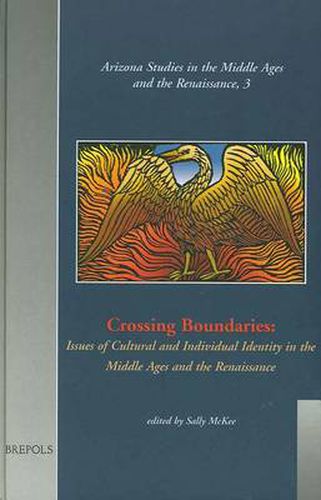Readings Newsletter
Become a Readings Member to make your shopping experience even easier.
Sign in or sign up for free!
You’re not far away from qualifying for FREE standard shipping within Australia
You’ve qualified for FREE standard shipping within Australia
The cart is loading…






The essays collected here have in common the concept of boundaries, which is defined according to discipline, and movement through boundaries. The essays cover a range of topics and periods. The first section consists of literary approaches to boundaries, ranging widely in subject matter from Norman drama to sixteenth-century goodnight ballads. The second section includes mainly historical studies of such topics as social mobility in Geoffrey of Monmouth’s twelfth-century History of the Kings of Britain, post-1453 Byzantine identity, and Milanese Renaissance musical genres. Individually and as a group, the essays contribute fresh insights into well-known and some less familiar works of the Middle Ages and the Renaissance. Contributions include: Linda Georgianna, ‘Geoffrey of Monmouth’s Historia regum Britanniae: lessons in self-fashioning for the bastards of Britain’; Robert L.A. Clark, ‘Eve and her audience in the Anglo-Norman Adam’; John Damon, ‘Seinte Cecile and Cristes owene knyghtes: violence, resignation, and resistance in the Second Nun’s Tale’; Elaine R. Miller, ‘Linguistic identity in the Middle Ages: the case of the Spanish Jews’; Emily Steiner, ‘Medieval documentary poetics and Langland’s authorial identity’; Patricia Marby Harrison, ‘Religious rhetoric as resistance in Early Modern goodnight ballads’; Jami Ake, ‘Mary Wroth’s willow poetics: revising female desire in Pamphilia to Amphilanthus’; Annabel Patterson, ‘The human face divine: identity and the portrait from Locke to Chaucer’; Jonathan Harris, ‘Common language and the common good: aspects of identity among Byzantine emigres in Renaissance Italy’; Nolan Gasser, ‘Beata et venerabilis Virgo: music and devotion in Renaissance Milan’; Elspeth Whitney, ‘Sex, lies, and depositions: Pierre de Lancre’s vision of the witches’ sabbath’; Laura Hunt Yungblut, ‘Straungers and aliaunts: the un-English among the English in Elizabethan England’.
$9.00 standard shipping within Australia
FREE standard shipping within Australia for orders over $100.00
Express & International shipping calculated at checkout
The essays collected here have in common the concept of boundaries, which is defined according to discipline, and movement through boundaries. The essays cover a range of topics and periods. The first section consists of literary approaches to boundaries, ranging widely in subject matter from Norman drama to sixteenth-century goodnight ballads. The second section includes mainly historical studies of such topics as social mobility in Geoffrey of Monmouth’s twelfth-century History of the Kings of Britain, post-1453 Byzantine identity, and Milanese Renaissance musical genres. Individually and as a group, the essays contribute fresh insights into well-known and some less familiar works of the Middle Ages and the Renaissance. Contributions include: Linda Georgianna, ‘Geoffrey of Monmouth’s Historia regum Britanniae: lessons in self-fashioning for the bastards of Britain’; Robert L.A. Clark, ‘Eve and her audience in the Anglo-Norman Adam’; John Damon, ‘Seinte Cecile and Cristes owene knyghtes: violence, resignation, and resistance in the Second Nun’s Tale’; Elaine R. Miller, ‘Linguistic identity in the Middle Ages: the case of the Spanish Jews’; Emily Steiner, ‘Medieval documentary poetics and Langland’s authorial identity’; Patricia Marby Harrison, ‘Religious rhetoric as resistance in Early Modern goodnight ballads’; Jami Ake, ‘Mary Wroth’s willow poetics: revising female desire in Pamphilia to Amphilanthus’; Annabel Patterson, ‘The human face divine: identity and the portrait from Locke to Chaucer’; Jonathan Harris, ‘Common language and the common good: aspects of identity among Byzantine emigres in Renaissance Italy’; Nolan Gasser, ‘Beata et venerabilis Virgo: music and devotion in Renaissance Milan’; Elspeth Whitney, ‘Sex, lies, and depositions: Pierre de Lancre’s vision of the witches’ sabbath’; Laura Hunt Yungblut, ‘Straungers and aliaunts: the un-English among the English in Elizabethan England’.